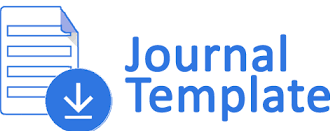Pemanfaatan Twitter Sebagai Media Penyebaran Informasi Oleh Dinas Komunikasi dan Informatika
Keywords:
information service, social media twitter, social mediaAbstract
This study aims to discuss the types of information services, the procedures for the delivery of information services, the obstacles faced in providing information services. The approach used is qualitative descriptive research. Sources of data in this study are divided into primary and secondary data sources. Data collection was carried out using several techniques, namely observation, interviews, and document study. The type of information disseminated by Twitter is information about government policies, public services, health, traffic, culture, natural disasters, current phenomena and other information that is of public interest. The procedure for using Twitter as an information medium is by the Communication and Information Technology Office consisting of 4 stages, namely: collecting information data from related agencies, processing data, making designs, publishing, evaluating to check the correctness of published information. Supporting factors using Twitter, namely the information conveyed quickly spreads, reaches many people, and is easy to use. The problem with using Twitter as a provider of information is coordination between managers. lack of coordination with related agencies, and limited number of managers.
Downloads
References
Ateng, S. (1976) Pengaturan Koordinasi Pemerintah di Daerah. Bandung: Tarsito
Awang, A. (2010) Implementasi Pemberdayaan Pemerintahan Desa. Yogyakarta: Pustaka Pelajar.
Fachrul, Z., & Nurhadi. (2017). Model Komunikasi Sosial Remaja melalui Twitter. Jurnal ASPIKOM, 3(3), 21-30.
Fahriyani, S. (2020) Penggunaan Sosial Media Twitter untuk Mitigasi Bencana di Indonesia. Jurnal IKRA-ITH Humaniora, 4(2), 45-57.
Faisal, M., Awaliyah, S., & Habibi, M. M. (2020). Perilaku Nasionalisme Masyarakat di Era Kemajuan Teknologi dan Informasi pada Masyarakat Samin di Kabupaten Bojonegoro. Jurnal Paris Langkis, 1(2), 140-155.
Herrero, L. C. J. A., Bedate, A., & del Barrio, M.J. (2012). Who pays more for more for a cultural festival, tourist or locals? A certainty analysis of a cintingent valuation application. International Journal of Tourism Research, 11(2), 495-512.
Liliweri, A. (2008). Dasar-Dasar Komunikasi Kesehatan. Yogyakarta: Pustaka pelajar.
Lima, D. B. (2017). M-Government: Limits and Possibilities for the Use of Mobile Apps as a Citizenship Tool in Brazil. ICEGOV New Delhi, AA, India.
Pakuningjati, A. L. (2015). Pengelolaan Media Sosial dalam Mewujudkan Good Governance. Skripsi: Universitas Gajah Mada (tidak diterbitkan)
Purnama, H. (2011). Media Sosial di Era Pemasaran 3.0 Corporate and Marketing Communication. Jakarta: Pusat Studi Komunikasi dan Bisnis Program Pasca Sarjana Universitas Mercu Buana.
Putra, E. D. (2014). Menguak Jejaring Sosial. Ebook. http://kambing.ui.ac.id/onnopurbo/ebook.SU2013/SuryaUnivMenguak-Jeraring-Sosial.pdf.
Rosady, R. (2005). Kiat dan Strategi Kampanye Public Relations. Jakarta: Raja Grafindo Persada.
Sedarmayanti. (2007). Sumber Daya Manusia dan Produktivitas Kerja, Bandung: Penerbit Mandar Maju
Sinambela, L.P. (2010). Reformasi Pelayanan Publik; Teori, Kebijakan, dan Implementasi, cetakan kelima. Jakarta: PT. Bumi Aksara
Sutanta, E. (2003). Sistem Informasi Manajemen. Graha Ilmu. Yogyakarta.
Thoha, M. (2005). Perilaku Organisasi: Konsep Dasar dan Aplikasinya. Jakarta: Raja Grafindo Persada.
Republik Indonesia. Undang-undang Tahun 2008 tentang Keterbukaan Informasi Publik
Wardanie, S. K. (2014). Efektivitas Twitter Sebagai Media Informasi Bagi Mahasiswa. Skripsi: Universitas Muhammadiyah Malang (tidak diterbitkan)
Widiastuti, D. K. (2014). Twitter Sebagai Media Alternatif Informasi Publik. Skripsi: Universitas Islam Negeri Sunan Kalijaga Yogyakarta (tidak diterbitkan)
Yusuf, P. M. (2010). Komunikasi Instruksional: Teori dan Praktek. Jakarta: PT. Bumi Aksara














